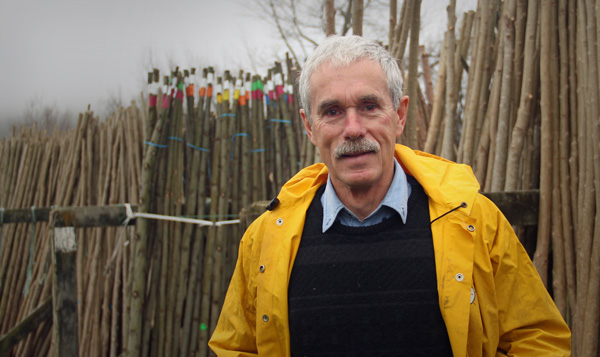A story of change and success in poplars and willows for erosion management
Posted on September 13, 2016

Trevor Freeman has seen the planting of hundreds of thousands of poplar and willow trees in the Gisborne region.
The retiring Gisborne District Council Chief Science Specialist and former Environmental Services Manager finishes with the Gisborne District Council on August 19. In the past 40 years his role has morphed from land management into environmental services concerned with water, biosecurity, forestry and many other issues as well as his first passion – erosion control.
The biggest event during his tenure was Cyclone Bola in 1988, which left little of the district unscathed and was a stark reminder of the need for trees, either strategically spaced such as with poplars and willows or as a closed forest canopy.
“Those areas with trees had significantly less soil erosion damage. This event encouraged farmers to change land use practices and led to major government tree planting incentives that are still available today,” he says.
Trevor arrived in Gisborne as a Ministry of Works employee in 1976. He worked for the Poverty Bay Catchment Board and East Cape Catchment Board before local body amalgamation and boundary changes in 1989 formed the Gisborne District Council.
“When I started, 40 years ago, we were just coming out of the impact of poplar rust, which had come through and cleaned out the majority of varieties. We were faced with only two or three that were relatively resistant to the rust so a new breeding programme was underway. It was the first chance to have a look at what we actually needed.”
He says every type of poplar and willow had been tried over the years.
“We were making progress but mainly through perseverance and trial and error and in the face of some indifferent establishment due to varieties that didn’t strike very well, pest control and stock damage and they were, in general, more susceptible to droughts.”
He says historic plantings are obvious markers for roads on the landscape.
“Our road lines in this district are strung along a line of poplars and willows – if it wasn’t for them, the roads wouldn’t be there. In northern Hawke's Bay it’s particularly noticeable, they were all planted to hold the roads. They might be old horrible silver poplars but they have done their job. There hasn’t been much roadside planting in my time but where they have taken off has been on farm, thanks to farmer acceptance and understanding of issue of soil erosion.”
A noteworthy change has been selection of poplar and willow varieties for a range of traits (not just their rust resistance).
“Strike rate, ability to coppice, pests and disease resistance, form, roughness of bark (to withstand stock) and there has also been a lot of work in nursery practice. If you can’t grow them properly in the nursery they have no chance on the hillside,” Trevor says.
“It does depend on climate too. What goes well here might not go so well in southern Hawke's Bay and vice versa so different areas have different demands for different varieties. The breeding programme has produced much better varieties and has reduced the negative effects, such as getting rid of the suckering trees. We have success earlier – they’re faster growing and strike better. It’s so much easier to accept something if it looks better and works well.”
Other changes have been the development of different types of pole sleeves and the use of helicopters to fly poles out onto farmland.
“That can make it a simple process. In the early days it was all by packhorses and fighting the mud in winter time. Helicopters revolutionised that in the hill country.”
Trevor says the wide scale of planting in the regions wouldn’t have happened if not for the various grants schemes, which stem from either central government or rates income.
“It has been part of my career battling away to keep those grant monies and that’s no mean task.”
But he adds real farmer acceptance is the key to planting success.
“Farmers are keen on the use of poles and they like the concept of poplars and willows to hold the soils. There used to be resistance, but now there’s belief.”
Improving maintenance and management is now the next step.
“Most farmers wouldn’t pollard as a general rule on their farms but if there’s drought they will as a last resort feed option. There’s a tendency to let them grow and they get bigger and bigger and there’s not much happening in terms of dedicated maintenance. They get ginormous and then farmers can’t do anything with them. That’s the new message. Try to manage them gradually.”
Trevor says the evolution of poplars and willows on New Zealand farms is continual.
“The process is never static and we should be always looking at what’s around the corner and breeding accordingly. The genetic material held by the Poplar and Willow Research Trust is extremely valuable – there is no biosecurity risk as it’s all already in New Zealand.”
Trevor represented regional council land management officers on the Poplar and Willow Research Trust from its inception to his retirement.
Trevor is looking forward to a true retirement and won’t be doing any significant consultancy work once he finishes with the council. He says he has enjoyed the chance to see so much of the Gisborne region.
“You see more farms working for a regional council than farmers do and I’ve enjoyed it. Some people laughed at me tramping up in the hills in the weekends and then over farmland during the week but farmland is really interesting… more interesting than the bush.”